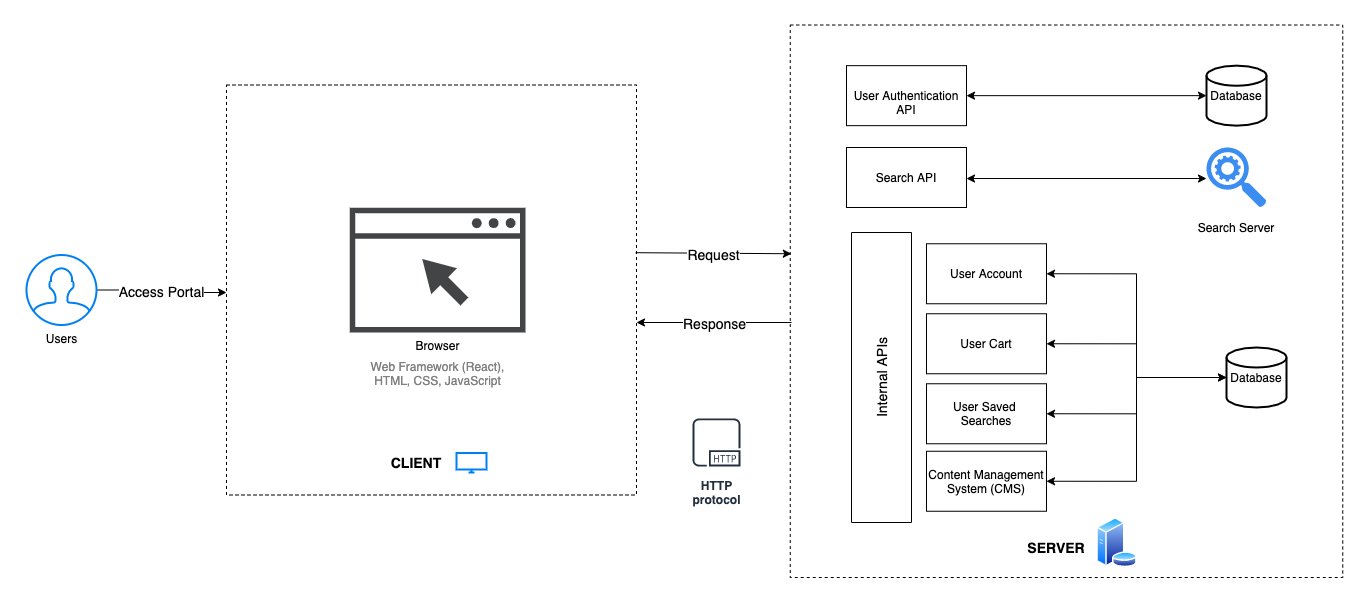Architecture Design
This page provides a high-level overview of the project architecture.
Overview
The project repo is a mono-repo split up between directories for the /frontend, /backend, /traefik, and /docs. Each directory contains its own microservice(s). The /traefik directory is intended for deployment in a production environment.
Why a mono-repo?
- Only client for the MetaGrid API back-end is the MetaGrid front-end
- Simplifies end-to-end development and testing -- ship code faster!
- Effective end-to-end code reviews
- Easy refactoring
- Reduced code complexity with standardizations across services
Source: http://blog.shippable.com/our-journey-to-microservices-and-a-mono-repository
Simple Architecture Diagram

File Structure
In root, there are multiple directories that contain microservices:
/frontend/backend/traefik/docs
Front-end
The user interface is rendered through React components which allow for modular and reusable design patterns.
To communicate with REST APIs, the front-end uses a promise-based HTTP client. Aside from the MetaGrid API back-end, here are other ESGF services used:
- ESGF
SearchAPI - This API is the interface connected to the search engine (Solr, Elastic Search) - ESGF
wgetAPI - This API generates wget scripts for downloading datasets
Back-end
MetaGrid's Django REST Framework back-end serves REST APIs, which send and receive JSON data via endpoints.
Traefik
Traefik is a modern HTTP reverse proxy and load balancer that makes deploying microservices easy. Traefik is used in the production deployment of MetaGrid.
Docs
Stores document related files for the entire project using Markdown and MkDocs.